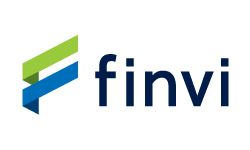Source: site
The Consumer Financial Protection Bureau (CFPB) announced it will shift to a limited oversight role rather than dismantling the agency outright, reversing earlier plans 
Scope of Limited Oversight
-
The CFPB will reduce its supervision and examination footprint by half, prioritizing oversight of the highest-risk entities and markets while shifting away from expansive enforcement measures.
-
The new approach will emphasize correction and conciliation with financial institutions, focusing on clear statutory violations and consumer complaints instead of broader or novel legal interpretations.
-
Areas still flagged for active oversight include debt collection, the Truth in Lending Act (TILA), the Fair Credit Reporting Act (FCRA), and the Electronic Fund Transfer Act (EFTA).
Reasons for the Change
-
Court challenges and union actions forced the administration to pause or alter its plans to comprehensively dismantle the CFPB, resulting in the agency scaling back instead of shutting down completely.
-
Trump administration policies included slashing the CFPB’s budget by cutting its Federal Reserve funding in half, as well as dropping litigation and settlements in process, contributing to reduced operations.
Implications
-
While the CFPB remains operational, its capacity for consumer protection has been significantly reduced, with many enforcement cases paused or handed off to the Department of Justice.
-
Consumer advocates have raised concerns that these changes could weaken federal consumer financial protections, leaving broader oversight to state regulators and nonprofit organizations.
-
The future of the CFPB remains uncertain, as further funding and legal decisions are expected to impact its ability to function into 2026.
Bank examinations in 2026 will look markedly different due to the CFPB’s shift to limited oversight, with agencies like the Office of the Comptroller of the Currency (OCC) and the CFPB themselves adopting a more risk-based and tailored approach to supervision. The number of federal exams will be sharply reduced—by about 50%—with a focus on targeting only the highest-risk banks and areas of clear statutory violations or consumer harm.
Key Changes for Bank Examinations
-
Examinations will be less frequent and less expansive, especially for community banks, with fixed requirements and policy-based activities not mandated by law eliminated from exam procedures.
-
Exam scope and frequency will be determined by each bank’s size, risk profile, and operations, replacing a one-size-fits-all process with more flexibility and a focus on tangible risks like capital, liquidity, credit exposures, and consumer fraud.
-
Examiners will emphasize collaborative correction and measurable consumer benefits, making exams quicker and less likely to result in enforcement actions unless clear harm or statutory violations are discovered.
Focus Areas and Implications
-
Banks should expect less scrutiny over technicalities or novel legal theories and instead see exams focus on material consumer injuries (like fraud or improper fees).
-
Areas such as mortgages, fair credit reporting, debt collection practices, and consumer complaint responses will remain key topics of scrutiny.
-
The reduction in oversight could ease the regulatory burden for low-risk, smaller institutions but may increase risk of inconsistent consumer protections and possible gaps in oversight, particularly as state regulators or the Department of Justice may fill in some enforcement gaps.
In summary, bank exams in 2026 will be more targeted, less frequent, and focused mainly on the most serious risks and violations, especially for community banks and smaller institutions.




